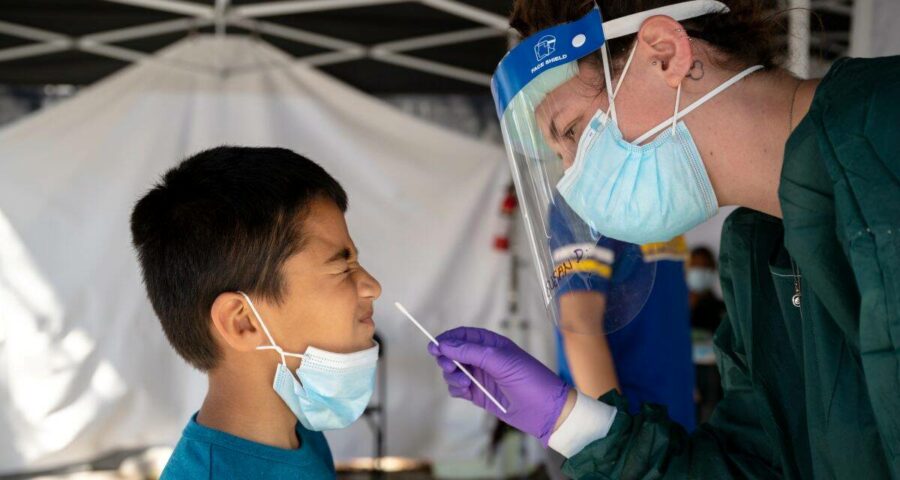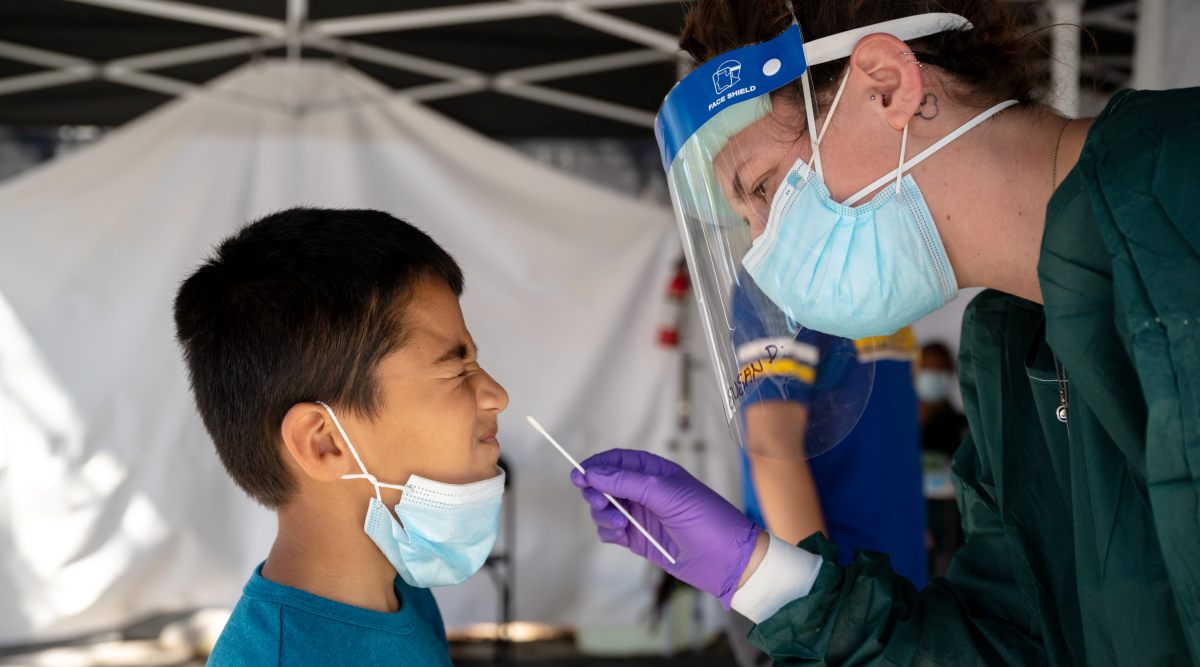But the $15 billion figure is only half of what President Joe Biden initially proposed, and Friday's announcement drew complaints from health experts who warned lawmakers not to squander an opportunity to use the lessons of the coronavirus pandemic to fully prepare the nation for the next one.
Written by Sheryl Gay Stolberg
The White House, stepping into delicate negotiations on Capitol Hill over funding to prevent future pandemics, unveiled on Friday a $65.3 billion preparedness plan that it likened to the Apollo missions to the moon, and called on Congress to immediately invest at least $15 billion for the effort.
But the $15 billion figure is only half of what President Joe Biden initially proposed, and Friday’s announcement drew complaints from health experts who warned lawmakers not to squander an opportunity to use the lessons of the coronavirus pandemic to fully prepare the nation for the next one.
The plan, drafted by Biden’s science adviser, Eric Lander, and his National Security Council, would establish a full-time “Mission Control” office to coordinate the work of agencies across the government to spot emerging threats and ready the nation to fight them. It calls for $65.3 billion to be spent over the next seven to 10 years.
Roughly one-third of the total investment, $24 billion, would be allocated to developing, testing and manufacturing new vaccines for a broad range of viral threats. Nearly $12 billion would be for developing therapeutics, and $5 billion for diagnostic tests; the rest would help develop early warning systems, improve the nation’s pandemic preparedness stockpile and build capacity for manufacturing vital supplies.
“We’ve got to seize the unique opportunity to transform our scientific capabilities so we’re prepared for the increasing frequency of biological threats on the horizon,” Lander said, adding, “And it’s vital that we start with an initial outlay of $15 [billion] to $20 billion to jump-start these efforts.”
Biden’s request for $15 billion to be included in a sweeping budget bill Democrats intend to pass in the coming weeks represents a significant compromise. In March, the White House announced that its American Jobs Plan would include $30 billion for pandemic preparedness. But on Capitol Hill, where moderate Democrats are pushing to lower the price tag of the $3.5 trillion package, lawmakers have considered spending $8 billion on pandemic preparedness.
“It would be a travesty if, in this time of the worst pandemic in a century, the administration and Congress, both sides of the aisle, didn’t get together and provide substantial funding to greatly reduce the risk of future pandemics,” said Dr. Tom Frieden, who ran the Centers for Disease Control and Prevention in the Obama administration.
In July, when it looked like Democrats on Capitol Hill might slash the president’s $30 billion request to $5 billion, Frieden and Tom Daschle, a former Senate Democratic leader who made health care his signature issue, wrote an opinion essay in The Hill that argued such a cut was unthinkable after the worst public health crisis in a century.
Daschle said Friday that both $15 billion and $65 billion were “a fraction of what is needed now.” The Bipartisan Commission on Biodefense, a private organization of which he is a member, has proposed $100 billion over 10 years, he said.
“I am very concerned that if we don’t commit the resources now, it will only get harder, and less likely, in the years ahead,” Daschle wrote in an email. “Now is the time to apply lessons learned.”
Some Democrats have repeatedly called for the initial $30 billion to be included in the budget package. Among them are Sen. Patty Murray, D-Wash., chair of the Senate health committee, and Sen. Elizabeth Warren, D-Mass. Warren and six of her Democratic colleagues recently wrote to the House and Senate leaders of both parties, calling on them to include $30 billion in the budget package “to prevent and prepare for future pandemics.”
“The COVID-19 pandemic has made clear that underinvesting in our public health infrastructure, our biomedical research pipeline and our medical supply chain has disastrous consequences,” the senators wrote.
Committees are still negotiating the details of the budget package, and several people familiar with the plan said the White House’s Friday announcement might be an effort to press leaders on Capitol Hill — especially Sen. Chuck Schumer, D-N.Y., the majority leader — to get behind the administration’s full $65.3 billion plan and to commit to at least $15 billion in the budget measure.
Schumer has so far been noncommittal. “I’ve been working and I’ll keep working to make the investments needed to ensure we are fully prepared for future pandemics,” he wrote last month on Twitter.
Lander was joined Friday by Elizabeth Cameron, senior director for global health security and biodefense on the National Security Council — a job she also held in the Obama White House, where she drafted a preparedness document known as the pandemic playbook. She said the Biden plan “very much draws on those efforts,” as well as “on lessons from this pandemic.”
According to documents released by the White House, the plan has five central goals: improving and expanding the nation’s arsenal of vaccines, therapeutics and diagnostics; improving surveillance of infectious disease threats; strengthening the public health system, with a “particular focus on reducing inequities”; building up the supply chain and the stockpile for personal protective gear and other items; and “managing the mission,” by creating a new Mission Control office — a task Lander likened to the Apollo missions to send astronauts to the moon in the 1960s.
“If you’re getting to the moon, and you have a great booster rocket but you haven’t got a capsule capable of landing or computers capable of directing, it’s not going to work,” he said.
Source: Read Full Article


